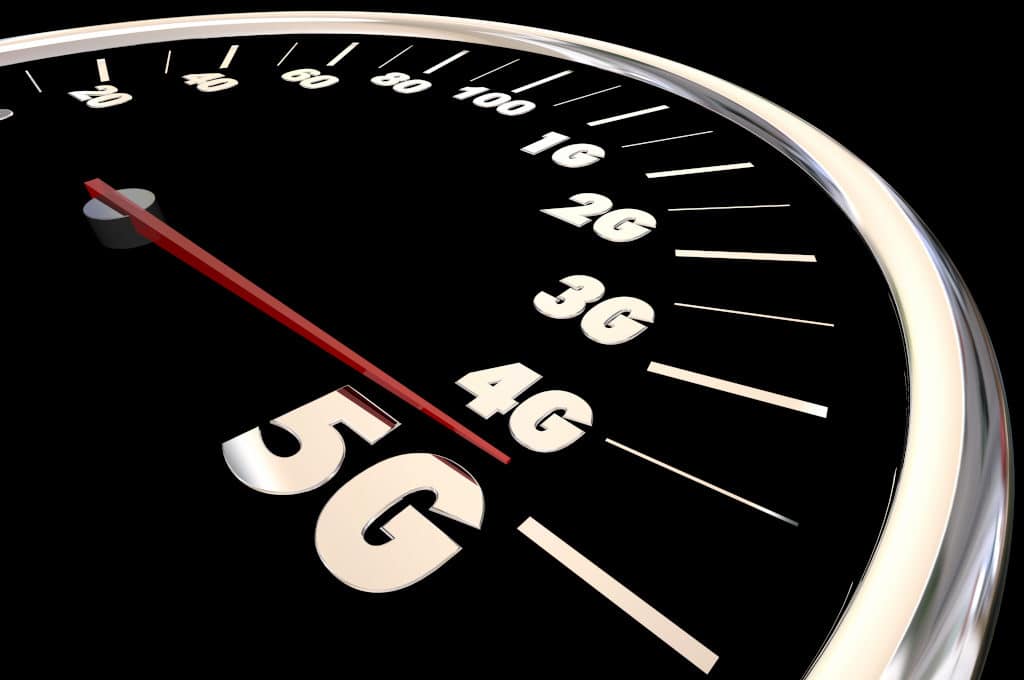source: TTI Market Eye article by Murray Slovick
5G cellular telephony is rapidly approaching. Industry watchers predict that mobile routers, home routers and other initial 5G products will be launched by the end of this year.
It is expected that the first 5G-capable phones will start to appear early next year. AT&T has announced that it will launch 5G wireless service in 12 cities by the end of 2018, Verizon is bringing fixed 5G to homes in Sacramento, California, and four additional markets by year’s end and T-Mobile is aiming for a 2019 launch followed by nationwide 5G coverage in 2020.
5G infrastructure will address the speed, latency and bandwidth issues that restrain today’s 4G networks. The advantages of 5G are significant: it is intended to offer huge increases in data rates—in excess of 10GBps—extremely low latency, and uniform coverage over a wide area, as well as a thousand-fold increase in capacity.
5G will enable simultaneous ultra-high-speed wireless transmission (even in crowded environments) by opening new radio spectrum like millimeter wave (mmWave) bands over 20 GHz. The mmWave frequencies will first be utilized in Fixed Wireless Access (FWA) applications used by wireless carriers to provide Gbit FWA to residential customers. The next step will be using 5G mmWave to deliver Gbit mobile, such as live streaming of 4k video to smart devices and for the use of AR and VR applications.
In many respects, however, 5G will be a two-edged sword in that customer demand for new 5G mobile phones in 2019/20 is going to put additional strain on capacity within the electronic components supply network as components manufacturers and their distributors struggle to keep up with demand.
Here’s why: smartphones are the largest application market for multilayer ceramic chip capacitors (MLCCs) and at a time when major MLCC manufacturers are trying to increase production capacity to alleviating the current shortage, the dawning of the 5G era will rapidly increase the amount of MLCC s used. The average MLCC usage of 4G + (LTE-advanced) smartphones is estimated to be in the range of 550 to around 900, and it is predicted that each device in the 5G era will boost this number to more than 1,000.
To support the high data rates enabled by 5G systems will require mmW frequencies, namely, 24/26 GHz, 28 GHz/ and 37/39 GHz bands. In addition, active antenna ICs will be required to control gain, phase control and beam forming in the frequency bands.
Among the engineering challenges involved in using mmW frequencies are range limitations brought about by propagation losses; the higher the frequency the more the signal will degrade over distance. However recent advances in mmWave systems have turned some of the perceived disadvantages into system architecture enablers (think turning lemons into lemonade). For example, short transmission paths and increased propagation loss allow for spectrum re-use. And the established ability of mmWave in point to point communications to be tightly focused into beams allows signal strength to be directed exactly where it needs to go, reducing interference, and allowing multiple beams to be combined, resulting in increased range.
Deploying 5G on mmW frequencies presents great challenges to smartphone antenna and RF engineers. For example, to enable higher data rates 5G specifications mandate that handsets must support two uplink and four (4 x4 MIMO) downlink carriers in the bands above 1 GHz. This requires multiple antennas and independent RF pathways.
But as more antennas are packed into a smartphone, the average space that must be allotted to each antenna decreases. Making life even more difficult for the designer is the trend in smartphones to have a high screen to body ratio. Some of today’s 4G LTE phones achieve a 90% screen to body ratio. The gap in the bezel around the display is where the antennas reside. As the bezel shrinks, it squeezes antenna volume even further. As a result, a likely implementation is one where the antenna array is integrated into the same package containing the active transmitter and receiver circuits operating at the mmWave frequencies.
These compact electronically-steered antenna arrays will accommodate frequencies from hundreds of megahertz to tens of gigahertz and employ phased arrays, which have been used for many years in the aerospace and defense industries but are relatively new to the mass market world. New chips will support multiple radiating elements, and include gain and phase controls for analog RF beam steering.
Still another challenges that engineers now face is how to implement high-performance RF filtering in mmWave applications. There will be an increasing number of filters per device; the increase in RF paths within the device from multiple antennas and spectrum proliferation will require this larger number of filters. Unlike the power amplifier (PA), where a single device can be used for multiple frequency bands and technologies, a single filter will most likely be required for each individual frequency band.
RF filtering will be a vital technical point of a successful RF solution. One reason is that filters in the RF chain contribute to loss, which impacts Tx efficiency and will determine power-amplifier current draw as well as battery life. Maximizing PA efficiency on the uplink and receiver sensitivity on the downlink will require optimization of the entire RF chain.
Traditionally, passive RF/microwave components have been somewhat large, at least in package sizes to support the use of coaxial connectors. As the push toward 5G wireless networks requires the use of components in the mmWave frequency range, suppliers are preparing products that offer high performance and a high degree of flexibility, and perhaps even at lower cost.
